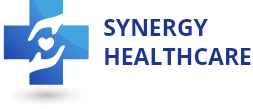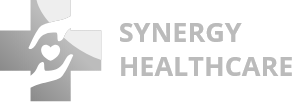The foundation of each prosperous dental office is dental billing, which guarantees the smooth conversion of provided services into income. However, complicated billing procedures, coding mistakes, or a lack of an effective revenue cycle management (RCM) plan create difficulties for many dental offices. But, no matter how experienced you are or how much you want to improve your practice’s financial health, mastering the basics of dental billing is imperative.
We’ll review the essential components of the dental billing procedure, offer practical advice, and show you how to increase productivity with efficient dental billing programs like Synergy HCLS.
What is the Dental Billing Process?

To ensure payment for dental services in a timely manner, the dental medial billing process is a comprehensive process in which claims are recorded, submitted, and adjusted. It includes crucial procedures such as gathering patient data, confirming insurance coverage, correctly coding services, filing claims, and monitoring payments.
A well-organized dental billing procedure can reduce claim denials, prevent payment delays, and preserve a consistent income flow. Mistakes or inefficiencies in this procedure may severely impact a dental practice’s financial stability.
Many dental practices use cutting-edge billing and coding software or work with specialized suppliers like Synergy HCLS to improve accuracy and efficiency. These technologies allow clinics to concentrate more on providing outstanding patient care by streamlining processes and guaranteeing adherence to industry standards.
7 Dental Billing Fundamentals Every Dental Office Should Know
1. Accurate Patient Data Collection: The first and foremost point regarding billing of dental services and making the process smooth and effective is obviously the gathering of accurate and basic data of the patient. On the first visit, obtain full demographic information, insurance details, and prior authorization necessitated. Omissions or inaccuracies can result in denials on claims.
2.Verify Insurance Benefits: Dentists often need to verify insurance benefits before seeing patients, this is the first thing that most doctors miss when it comes to dental medical billing tips. Understanding coverage limits, and exclusions and co-payments minimize billing errors and surprises for the patient, increasing trust and satisfaction.
3. Correct Dental Codes: Another important dental billing and coding aspect is precision. Keep your practice up to date with CDT codes One of the top reasons for claim denials is wrong or outdated codes.
4. Timely Claim Submission: Submitting the claims on time improves the probability of a quick reimbursement. Delays in submission means typically claim denial, thus losing revenue. Dental billing solutions such as Synergy HCLS helps to submit claims on time.
5. Monitor and Follow up on Denied Claims: It is impossible to avoid denial of claims but how you follow-up on claims will decide the financial health of practice. Create a system to monitor, analyse and respond to claim denials on a regular basis. Trends of denial help with refining your billing processes.
6. Train Your Team On Billing Processes: Regular training equips your team with the necessary skills to handle ever-evolving dental billing regulations and software. This reduces human errors and provides better efficiency for dental billing management.
7. Implement Technology or Collaborate with Specialists: In order to streamline the process of dental billing, automating the process using effective software or establishing affiliation with Synergy HCLS will help reduce administrative burden, errors and improve profitability.
How to Optimize Dental Billing to Increase the RCM
Boosting revenue cycle management (RCM) is critical for the financial health of your dental practice. Optimizing dental billing ensures a smoother workflow, quicker reimbursements, and fewer errors. Here are five proven strategies to enhance your practice’s RCM:
1. Embrace Automation:
Invest in modern software integrating patient management, billing, and coding functionalities. Automation reduces manual tasks, eliminates errors, and improves efficiency, allowing your team to focus on patient care.
2. Outsource Dental Medical Billing Services:
Partnering with experts like Synergy HCLS ensures professional claim handling, improving accuracy and turnaround time. Outsourcing can also reduce administrative burdens, freeing in-house staff for other priorities.
3. Implement Regular Audits:
Conduct routine audits to identify bottlenecks, inefficiencies, or coding errors. Regular evaluations streamline processes and ensure compliance with industry regulations.
4. Enhance Patient Communication:
Before their appointments, educate patients about financial responsibilities, including co-pays and insurance coverage. Clear communication prevents disputes and builds trust.
5. Focus on Continuous Training:
Keep your team informed on the trending coding changes, insurance policies, and billing best practices. Well-trained staff minimizes errors and enhances overall efficiency.
Adopting these strategies allows your practice to maximize RCM while delivering top-notch patient experiences.
Summing up
Dental medial billing management doesn’t have to be difficult. Using efficient dental billing solutions and grasping the basics will change how your clinic manages its revenue cycle. Your office may guarantee more efficient operations and improved financial results by decreasing claim rejections and enhancing patient satisfaction. Building a strong billing system requires investing in team training, working with professionals like Synergy HCLS, and utilizing technology. These tactics open the door to long-term success while streamlining the dental billing procedure. To increase cash flow, organize your dental billing, and establish a more effective, patient-focused business, take proactive measures right now.

